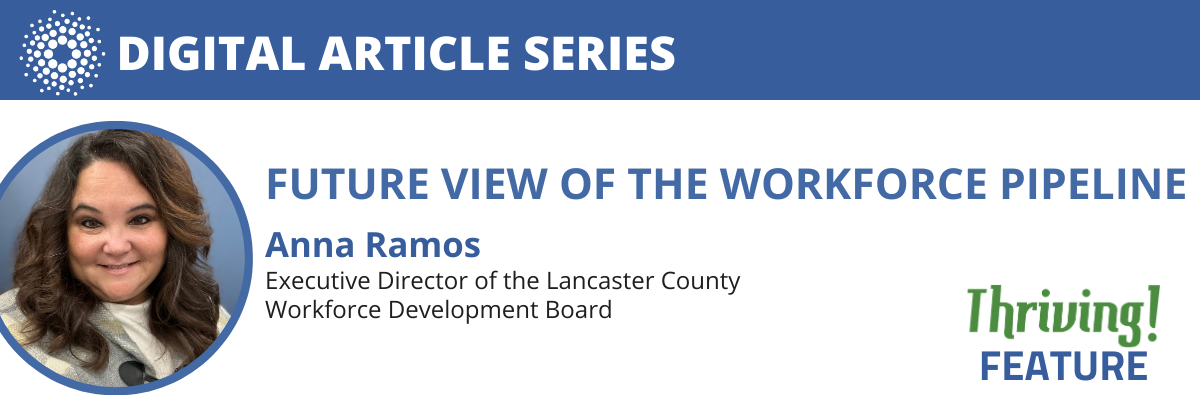Future View of the Workforce Pipeline
by Anna Ramos, Executive Director of the Lancaster County Workforce Development Board
Over the last six to seven years, there has been a major shift in how the workforce (businesses) engage with their employees and education (workforce pipeline). Businesses who have been struggling to find employees have seen an increase in need for those with more technical skills, especially in software and network developers, drafters and engineers, healthcare technologists, machine operators, and construction trades. This is because of several factors, the pandemic certainly being one of them, but the mass exodus of older workers from the workforce, who had those more technical skills. This is referred to as the silver tsunami, which we have been talking about happening in the next 5-10 years but happened at a more accelerated rate as a result of the pandemic.
There are a couple of ways that businesses and education are working together to meet this challenge. Businesses are forced to look within to see how they can upskill the current workforce they have to fill those jobs and engaging more with educational institutions to bring awareness to their company and career opportunities. This is a shift I do not see going away and in fact, getting stronger. Businesses are investing in their employees, which requires them to look at how they are retaining their workforce and attracting new employees. Our community is also invested in aligning the efforts between business and education through a partnership called Career Ready Lancaster!, where businesses and people can find resources on career pathways and ways to engage the future workforce.
Another factor to consider in the workforce challenges businesses are facing today, is the role technology plays in how our future workforce grows in talent as well as functionality and efficiencies of business. According to several studies quoted by the Society for Human Resource Management (SHRM), one in five U.S. Companies have already replaced workers with automation. According to Center for Workforce Information and Analysis, physical tools are quickly being replaced by technology. 80% of all occupations in Lancaster will require the need for users to be proficient in spreadsheet software, followed by Office suite software, word processing, personal computers, operating system software, internet browsing and presentations. Each year, due to growth or separations, over 23,000 in Lancaster workers will need trained or up-skilled to meet the technology requirements of today’s occupations.
More than ever businesses are engaged in finding a way to grow their workforce. The days of just saying they can’t find people are over, they are working on being a part of the solution on how to attract new employees and better articulate what skills are needed to educational partners. The trend I see for the next 10, 20, 150 years…continuing to grow the common language between business and education to ensure we are producing the future workforce our growing industries need. The educational system will engage with the business community and help articulate and train to the many career pathways available in the high demand occupations and businesses will welcome the support to meet their needs.
Anna Ramos
Executive Director
Lancaster County Workforce Development Board
This article was first printed in our December 2022 Edition of Thriving Magazine. You can read more here: Lancaster Chamber Thriving Magazine
not secure

